The core features of the product are: Financial Module with Access Control, Projects List and Details, Assignments, Worklogs, Timesheets, and Rate Calculator.
A financial module provides a series of dashboards.
The top-level dashboards aggregate general information on Contribution
Profit, Operating Profit, and Net Profit for top management to assess the overall direction
and trends of the company. These dashboards consolidate metrics from all company projects
over a selected period. Each stakeholder can focus on the data most relevant to their
interests.
For analytical purposes, reports can be generated in a tabular form,
filtered by clients, projects, and delivery managers. Such reports display revenue and
expenses, including salary expenses, which are pulled from the employee directory where
financial plans are recorded.

For each project over a specific period, a PnL (Profit and Loss)
Dashboard is available to identify potential issues such as inflated costs, revenue
discrepancies, or unusually high/low profitability.
There is also a high-level breakdown of salary-related data for
top-level oversight: total salaries accrued across the company, payroll taxes, and social
contributions.
From an accounting perspective, Professional Services Automation Software is
not an accounting tool, but an analytical overlay for high-level control. Many of the
figures are currently imported from the accounting system. It’s beneficial to view results
by project, client, or delivery stream, i.e., by groups of clients and projects. Previously,
this level of detail was unavailable, as the maximum granularity was at the departmental
level. Now, with the company’s restructuring, the level of detail has significantly
increased. If further developed with additional calculation functionalities, the PSA
Software could evolve into a full-fledged ERP system, enabling comprehensive management
accounting.
Accounting Team at Belitsoft Company
Financial documentation management module used for managing financial
documents related to projects.
It allows users to attach client-approved documents, such as Statements
of Work, contracts, invoices.
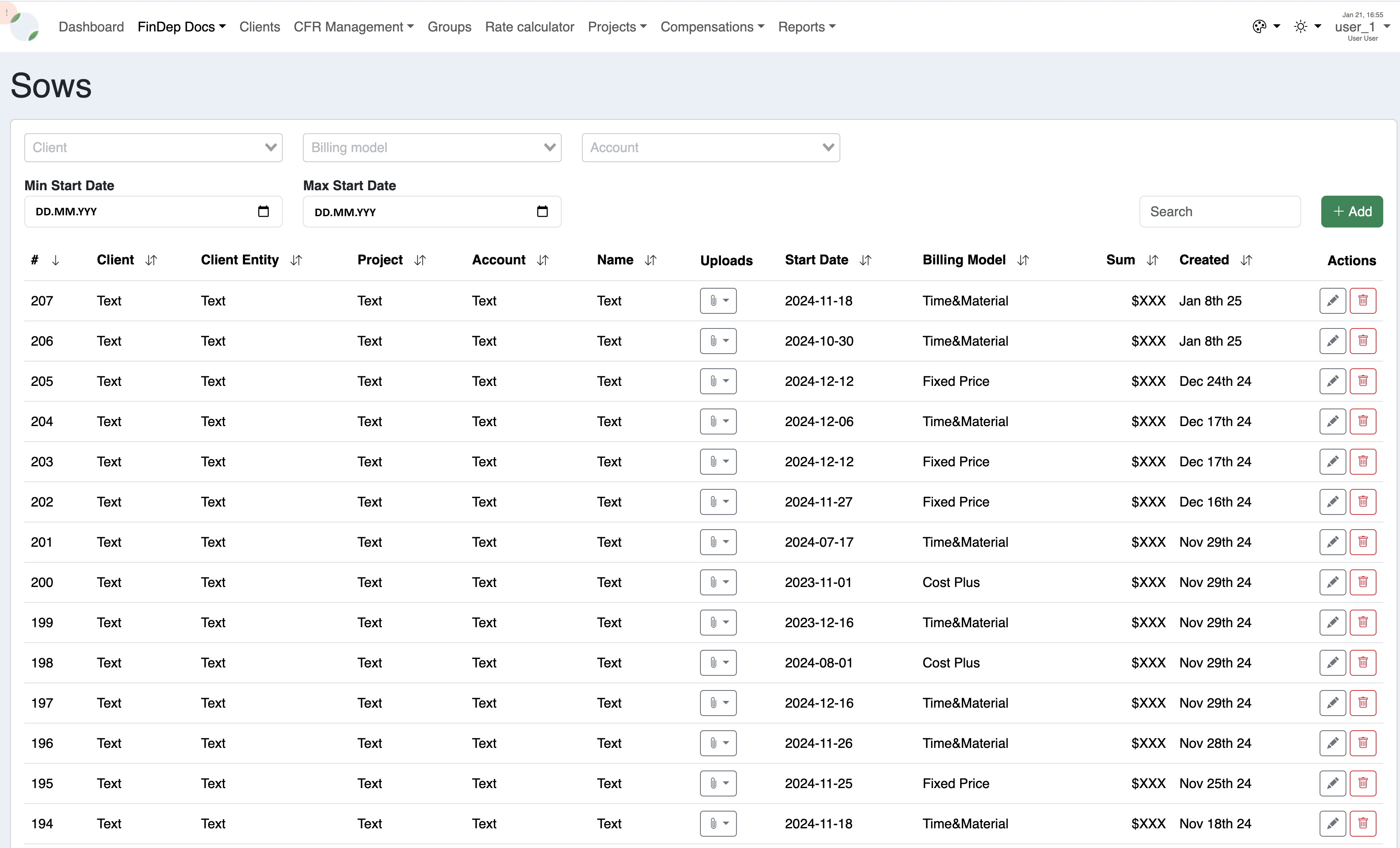
Each project has an attached signed SOW
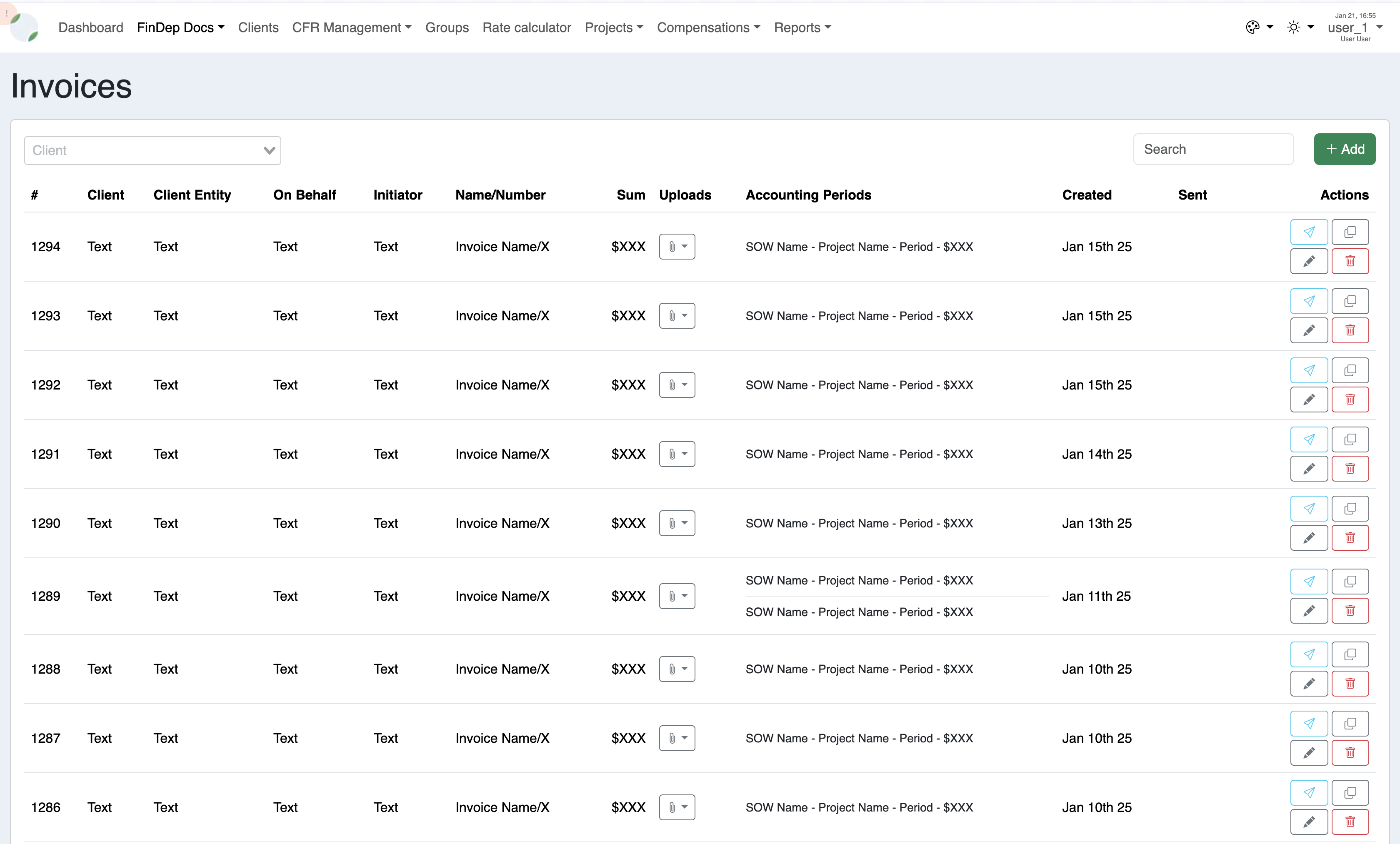
Invoices are linked to projects for easy access and accurate tracking
Users can easily generate and manage invoices directly within the system.
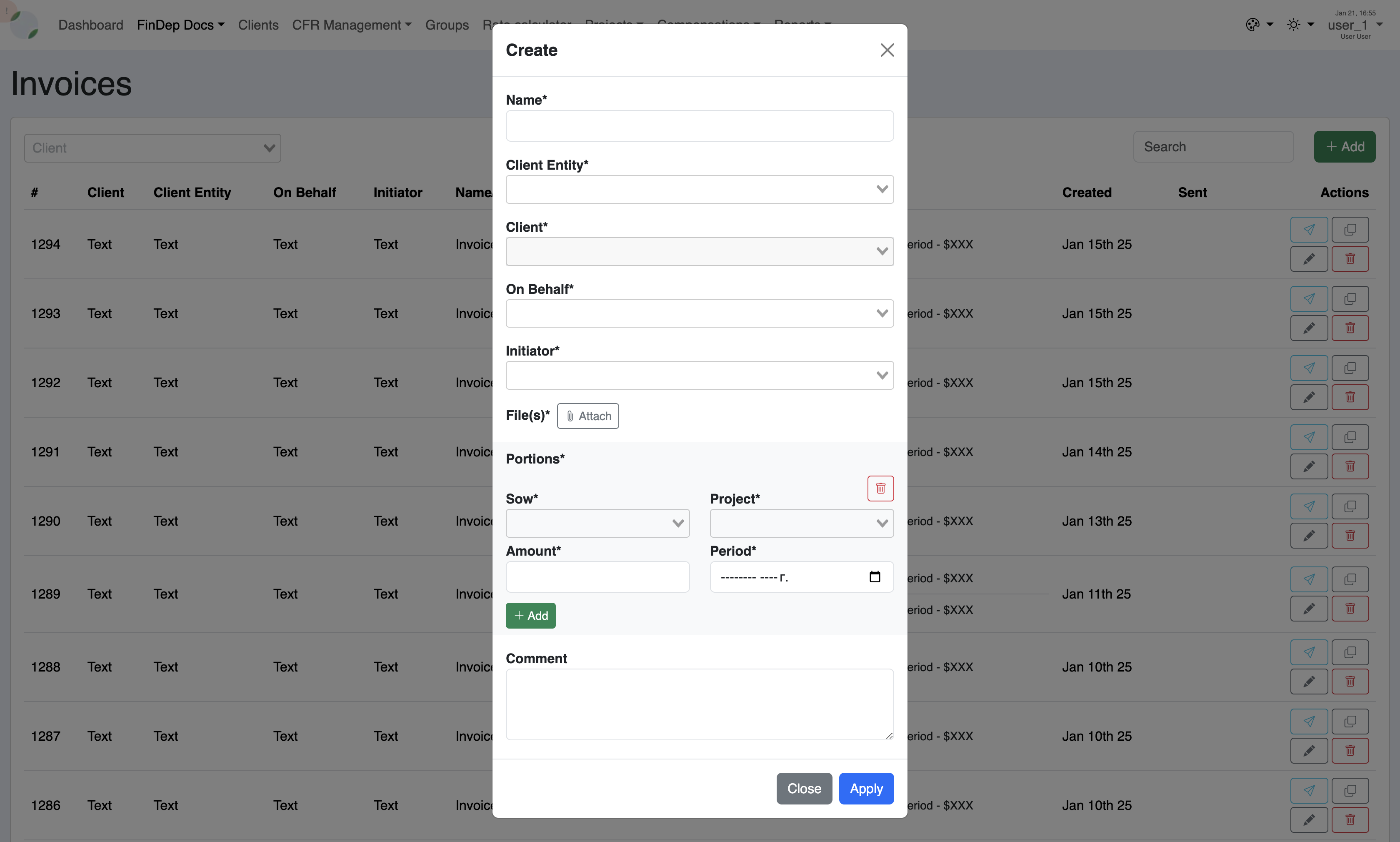
The form lets users create invoices with project details, attachments, and billing periods
The central dashboard displays a brief summary for each project,
including the client, account, project phase, pricing model, start date, and contract
amount.
Projects List and
Details
The Projects dashboard provides the status and a brief summary of each
project the PM has been involved in or is currently managing. The PM can use a
search box or filters to find a specific project, based on project name, project type (e.g.,
commercial, internal), client/account name, and more. If a PM needs to review projects
managed by other PMs (due to leave or other commitments), the tool allows them to access
those projects as well. In a shared resources model, employees may be assigned to multiple
projects, often under different PMs. With a centralized system to track resource allocation,
PMs have full visibility into each employee's availability.
Project Details pages are used by PMs to fill out and keep up to date
project information, including project phases like MVP, second phase, and third phase. This
is required to ensure that all worklogs are properly attached to the associated phase
later.
PMs keep project information complete and up-to-date. This starts by filling out the required details in the Details tab
This screen includes key project details: Delivery Manager, parent project (if any), client, account, project type, and start/end dates. Additional fields like budget are filled in as information becomes available
Switchers help PMs mark main projects or specific phases (for instance, post-MVP stages) to ensure accurate project tracking and correct worklog integration in PSA
Due to human errors, timesheets may not be linked to specific clients, or team members may
incorrectly allocate costs (time) to the wrong projects, especially for clients with
multiple projects using different payment types (e.g., Cost Plus and T&M). This can lead to
incorrect invoicing and misinterpretation, such as these projects being displayed in
accounting as highly profitable, which should not be the case.
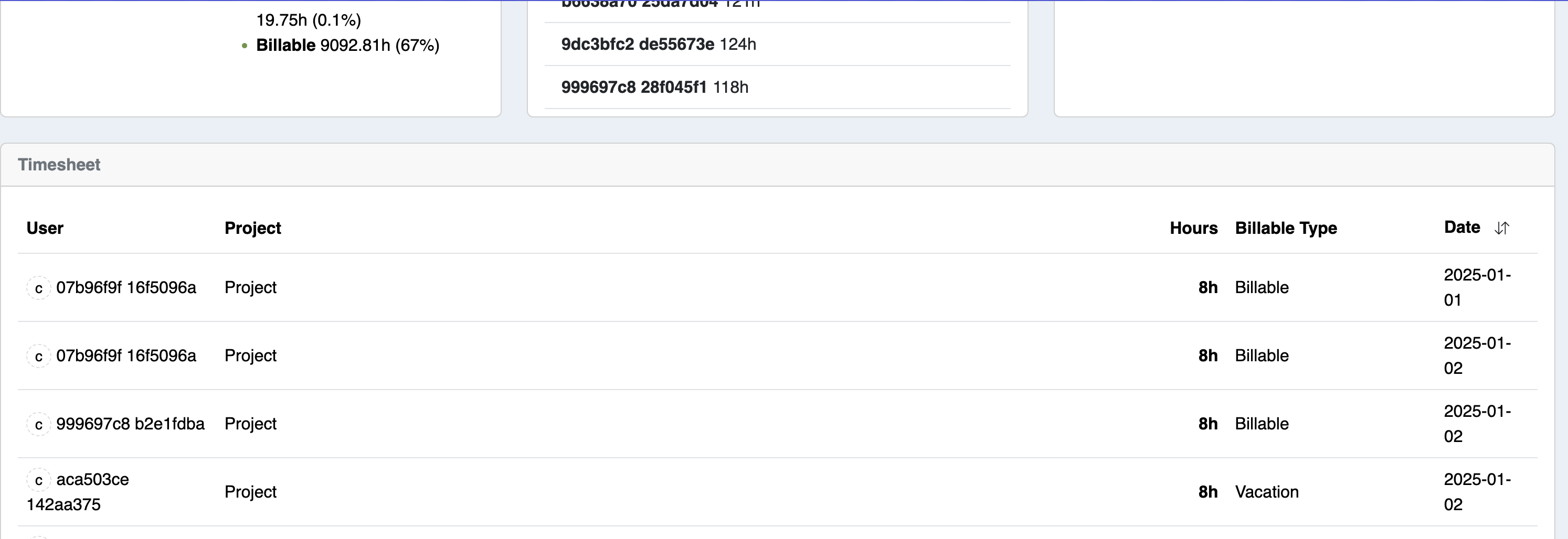
The screenshot shows employee reports by hours and write-off types. If an employee fully assigned to a commercial project has "NB: Internal" displayed, it signals the need to investigate and helps in transparently tracking workload and hour allocation across projects
An easy-to-use utilization dashboards allows quick recognition of such
issues. Financial managers can review individual clients and projects, analyze results,
identify discrepancies and their causes, and make adjustments that are not achievable with
standard tools.
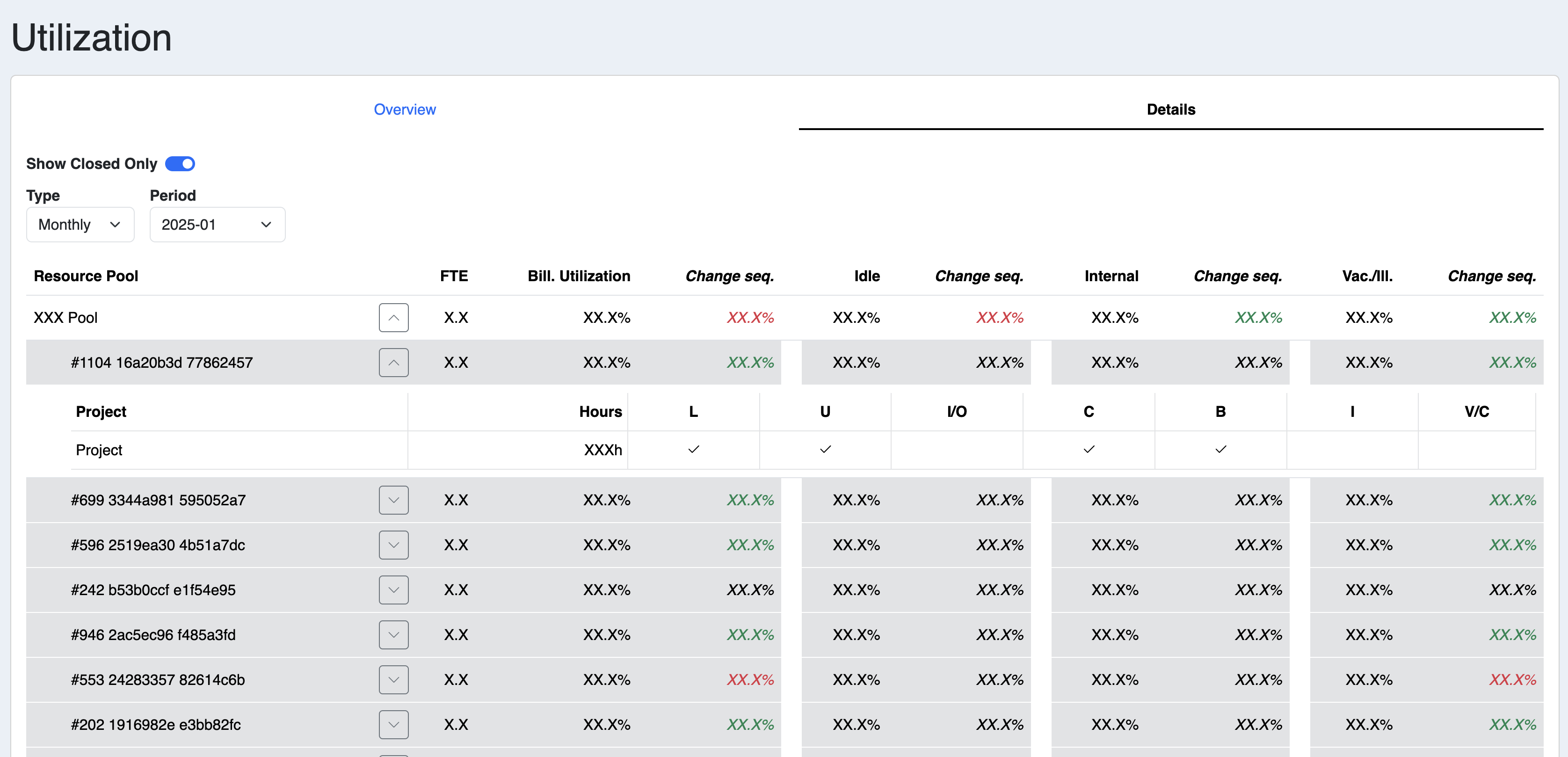
Detailed reports of an employee's logged hours, utilization, and bench time
Assignments
PMs want to understand employee workloads across multiple current
projects to plan for future projects. The assignment functionality allows them to locate
employees using the search function, assign employees to projects, specify their roles to
ensure everyone knows their tasks, and set the daily workload for each employee, as well as
the start and end dates of each employee’s involvement in the project.
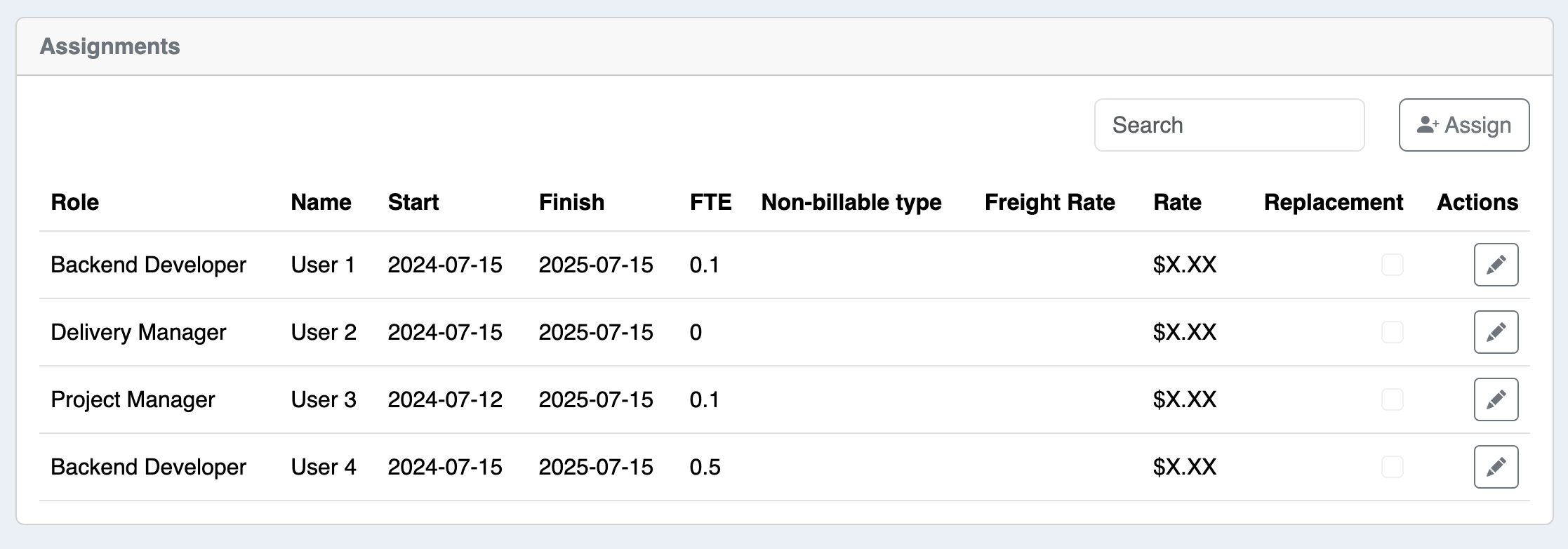
This interface allows for defining team roles, setting project timelines, and ensuring resource allocations align with client agreements
After inputting the cost of employees and the rate charged to the
client, they can calculate project profitability. Not all work performed by employees on a
project is billable (for instance, onboarding, bench reduction), so PMs have the ability to
specify non-billable time for accurate financial reporting and proper client billing.
Project conditions often change (e.g., client requests, employee
availability), so PMs can update assignments in real time.
After all configurations are made by PMs, the Delivery team can
understand who is working on each project, their roles, timeframes, rates, and how they are
billed to the client.
Worklogs
PMs need to know how many hours each employee has logged, when they
logged them, and the type of work tracked. All hours logged in Jira or ClickUp are
automatically pulled into the system.
Detailed worklog tables help PMs track part-time team members across multiple projects and quickly verify if time was accurately logged for monthly reports
Select an employee and a period to see how many hours they logged on the project
If an employee is on multiple projects, you can see how many hours they logged for each one during a specific week. This information is enough to verify hours and prepare a report
PMs can choose specific employees and select the period for which they want to audit their
workloads. They can also see the billable hours (payable by the client) and the total number of hours spent on the
project, which may include internal hours (paid by the company) or non-billable hours (e.g., related to a trainee or
assigned by the PM to reduce bench time).
Detailed worklogs allow PMs to provide clients with clear breakdowns of hours worked, ensuring
trust and minimizing disputes over billing.
Timesheets
This dashboard is primarily designed for project and resource managers, but it is also useful
for Delivery Managers. They can track who is working on which project, how many hours have been logged, how these
hours are accounted for or not accounted for, and, in general, how many people have logged time on a specific
project over a certain period. The advantage is that if someone tracks time in Jira and someone else in ClickUp, the
data can be viewed in a single interface.
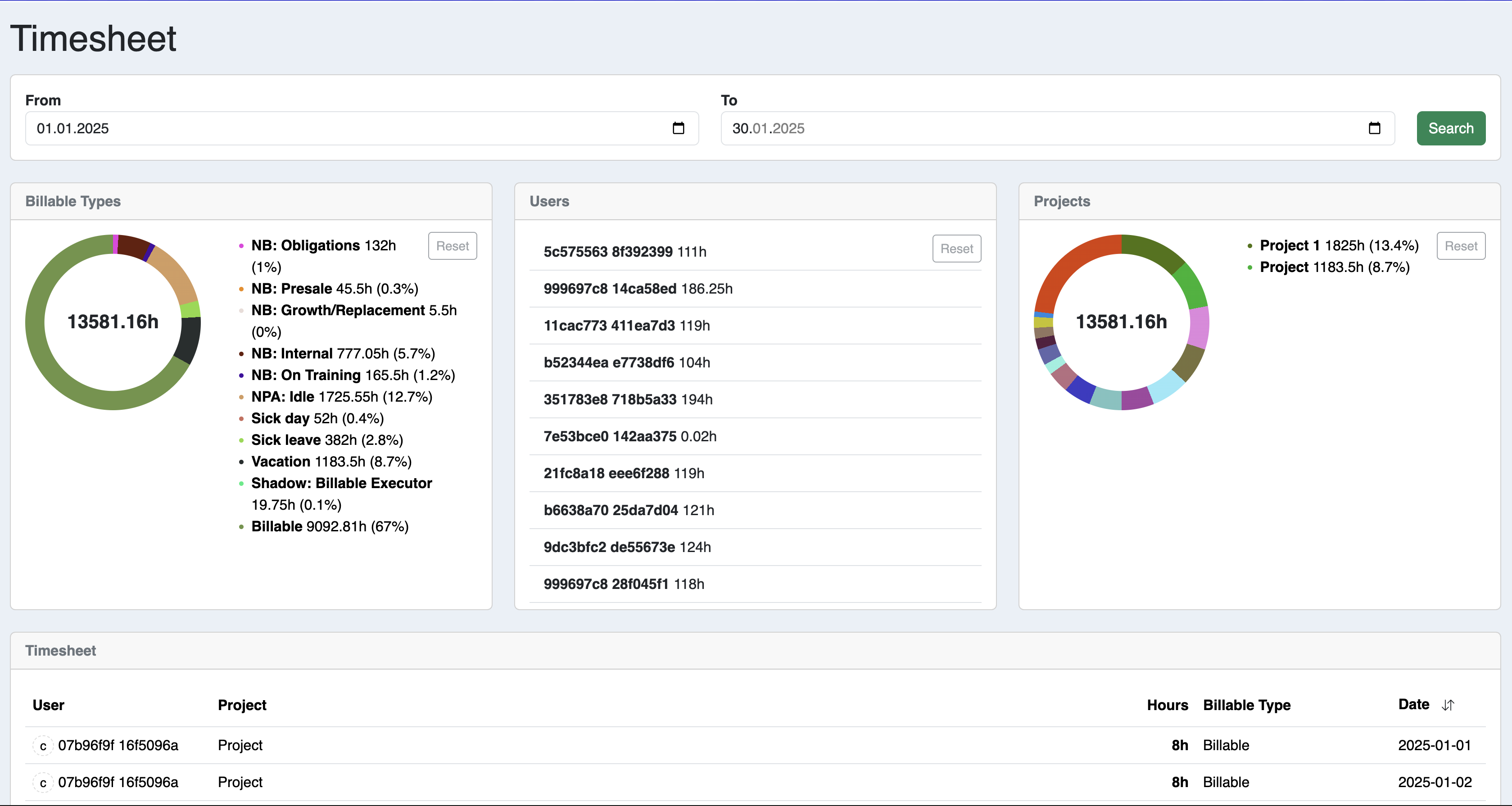
Timesheets provide a detailed breakdown of total hours worked, filtered by billable and non-billable time, with project-specific insights and in-depth hour tracking
The dashboard allows you to determine the total number of hours worked, broken down into
billable and non-billable, and compare them month by month. It highlights discrepancies, for example, when there is
an increase in non-billable hours in the current period compared to the previous one. In this case, it’s possible to
drill down to identify which specific project caused it and understand the reason (may be the data was entered
incorrectly).
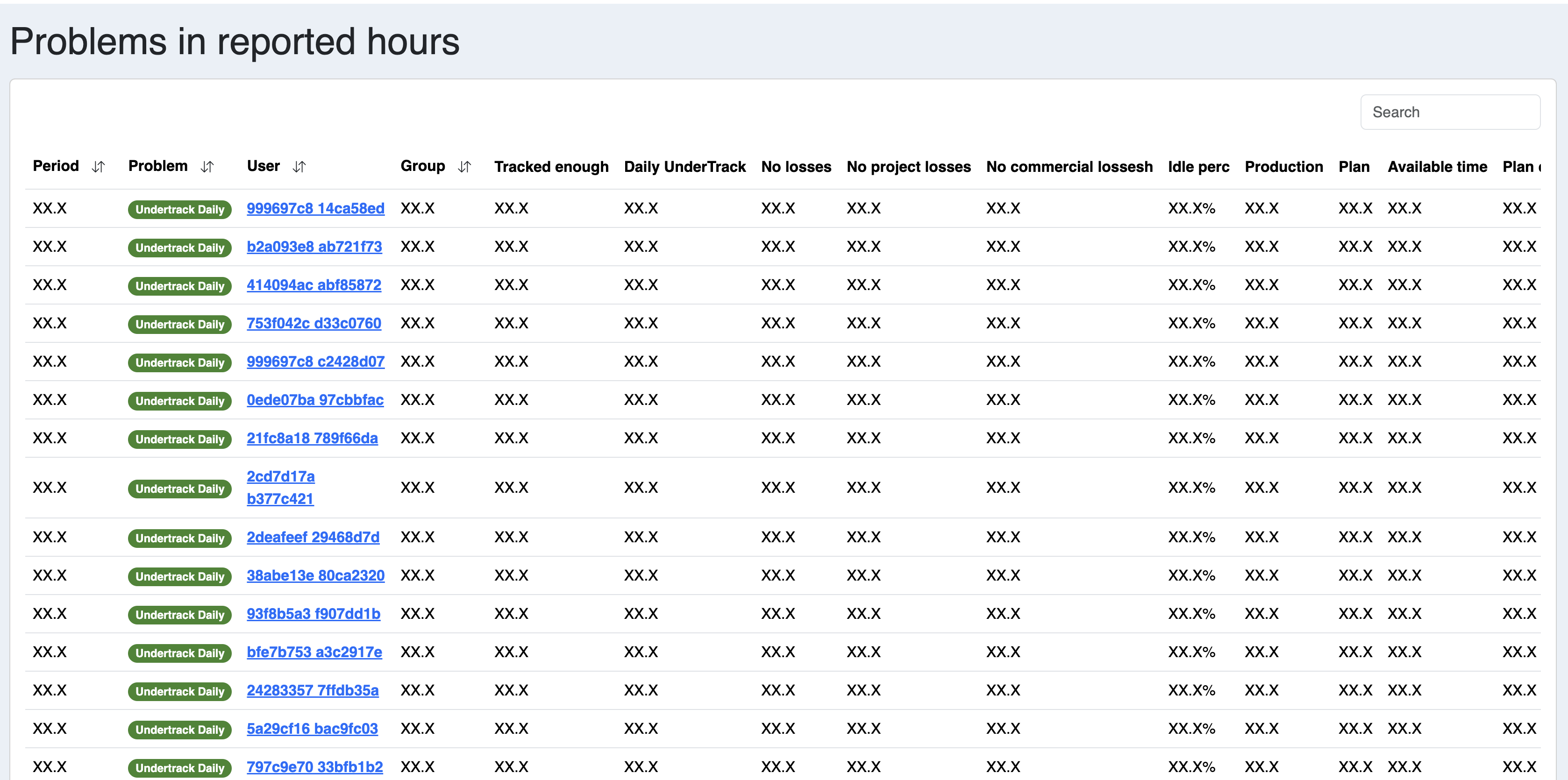
The screen highlights under-tracked hours—like 64 missing hours—enabling managers to identify discrepancies and verify time entries with employees
The "Problems in Reported Hours" tab within the Timesheets dashboard is a very handy and extremely
useful tool! All resource managers are absolutely thrilled with it!
Resource Management Team at Belitsoft Company
The Timesheet module shows the efficiency of their resource pool for resource managers. They
don’t have to go through every project to figure out what each employee is working on. All the information from
project management systems is combined in the Time Sheets module, which creates an Utilization dashboard.
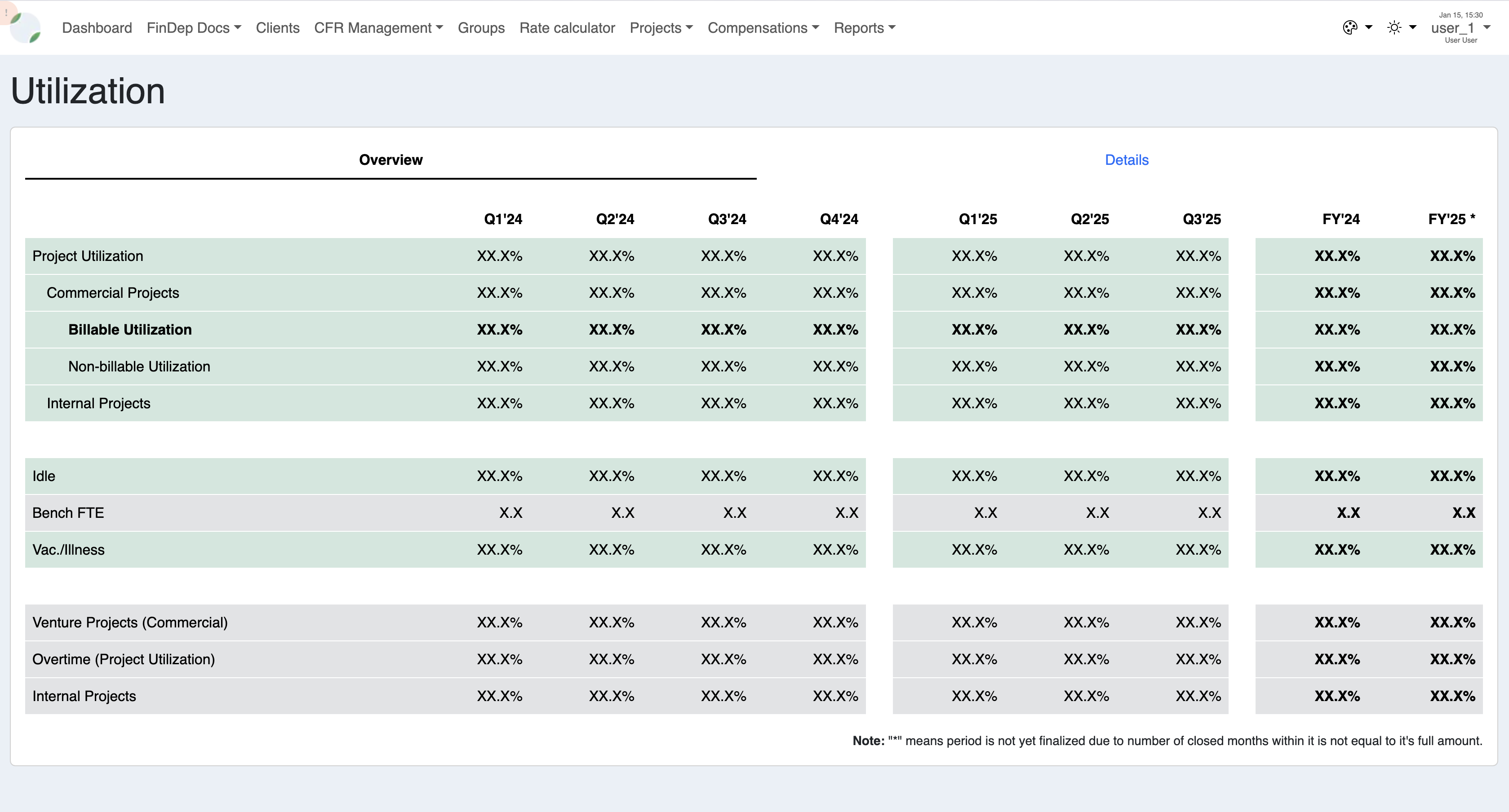
Utilization metrics are generated from detailed Timesheets, consolidating data from Jira and ClickUp. This allows tracking billable and non-billable hours, department-wide utilization by quarter or fiscal year, and monitoring bench time (IDLE) for proactive resource management
On the Utilization dashboard, resource managers can see their department’s utilization for the
quarter, compare it with other quarters and financial years, and track the percentage of bench time in their pool.
Additionally, they can view how much each employee has reported, whether they are utilized or underutilized, and
their bench time. This allows them to not only analyze their team’s performance but also forecast potential outcomes
and react quickly.
Rate Calculator
This module lets the resource manager calculate an employee’s cost rate per hour. Since company rates methodologies differ and may be proprietary, the Rate Calculator tool can be customized accordingly by Belitsoft's engineers to fit unique needs of any company.





















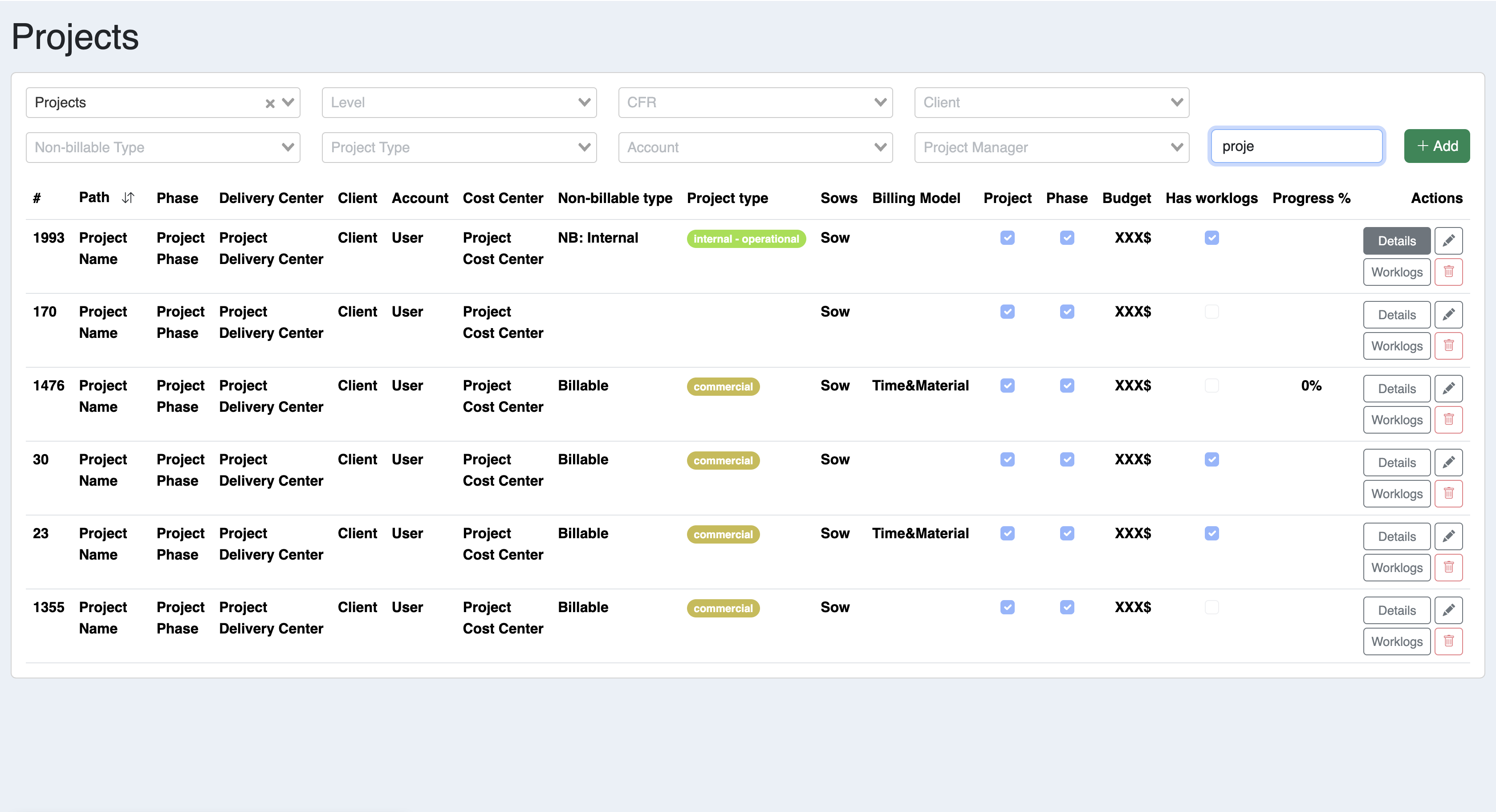
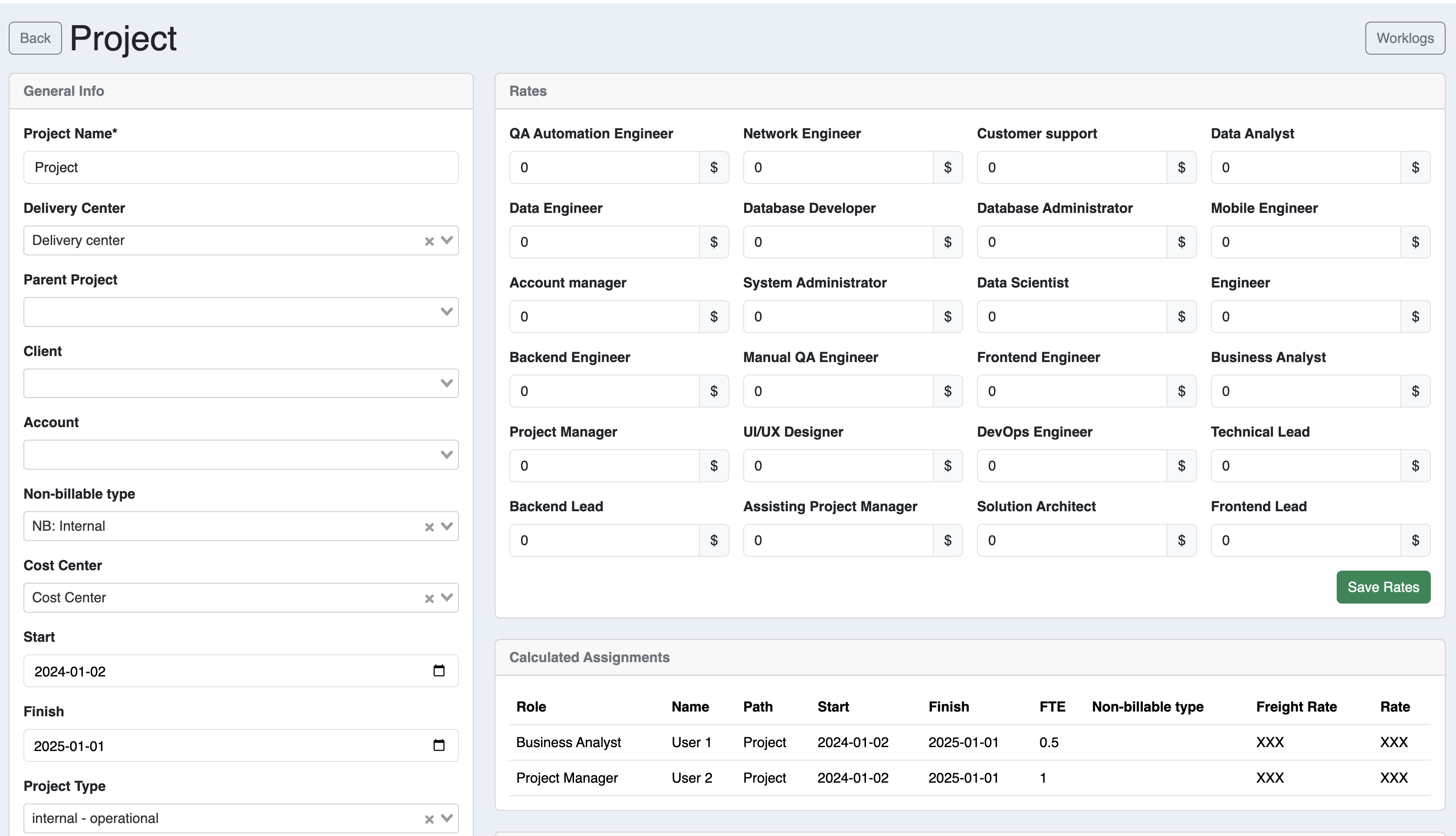
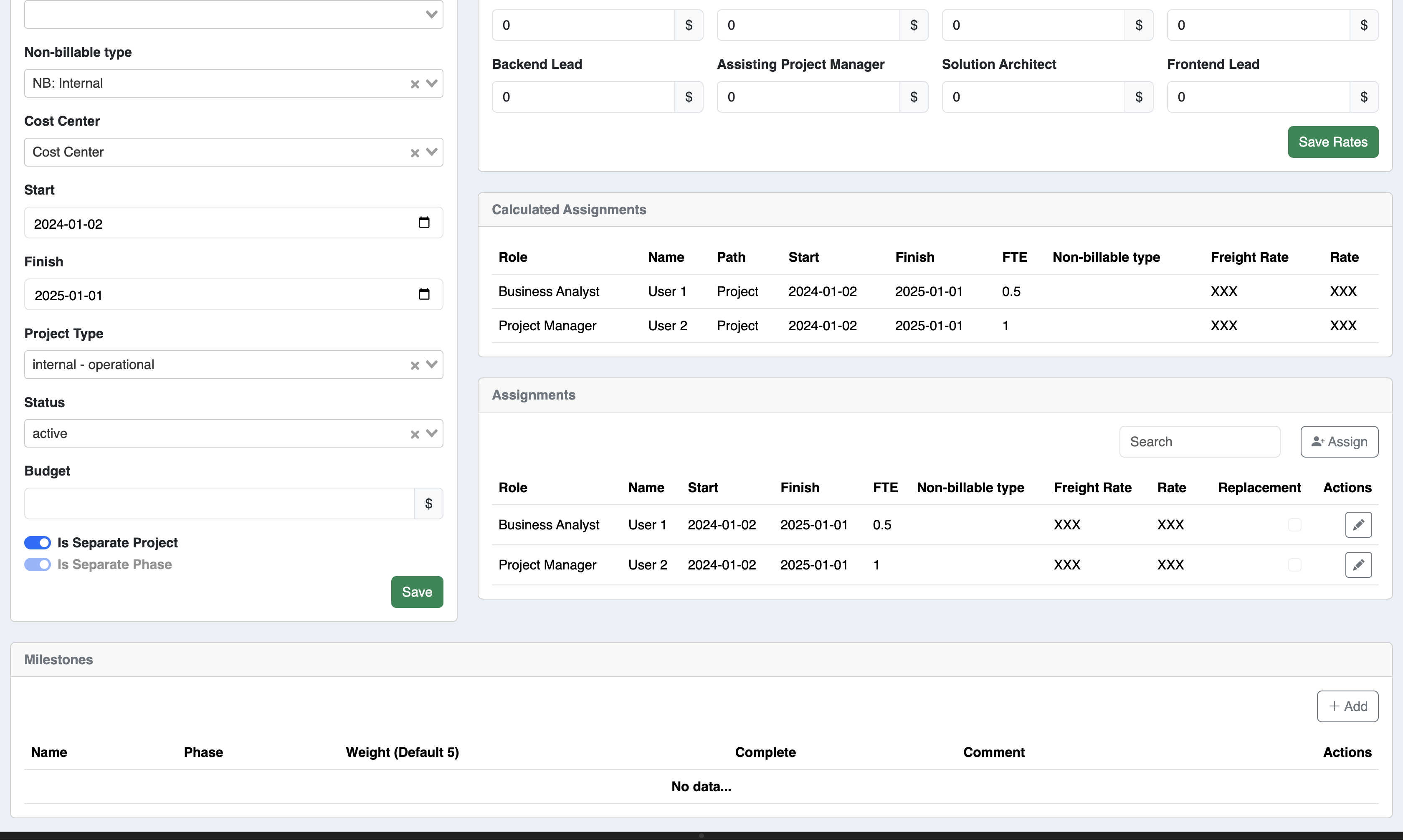



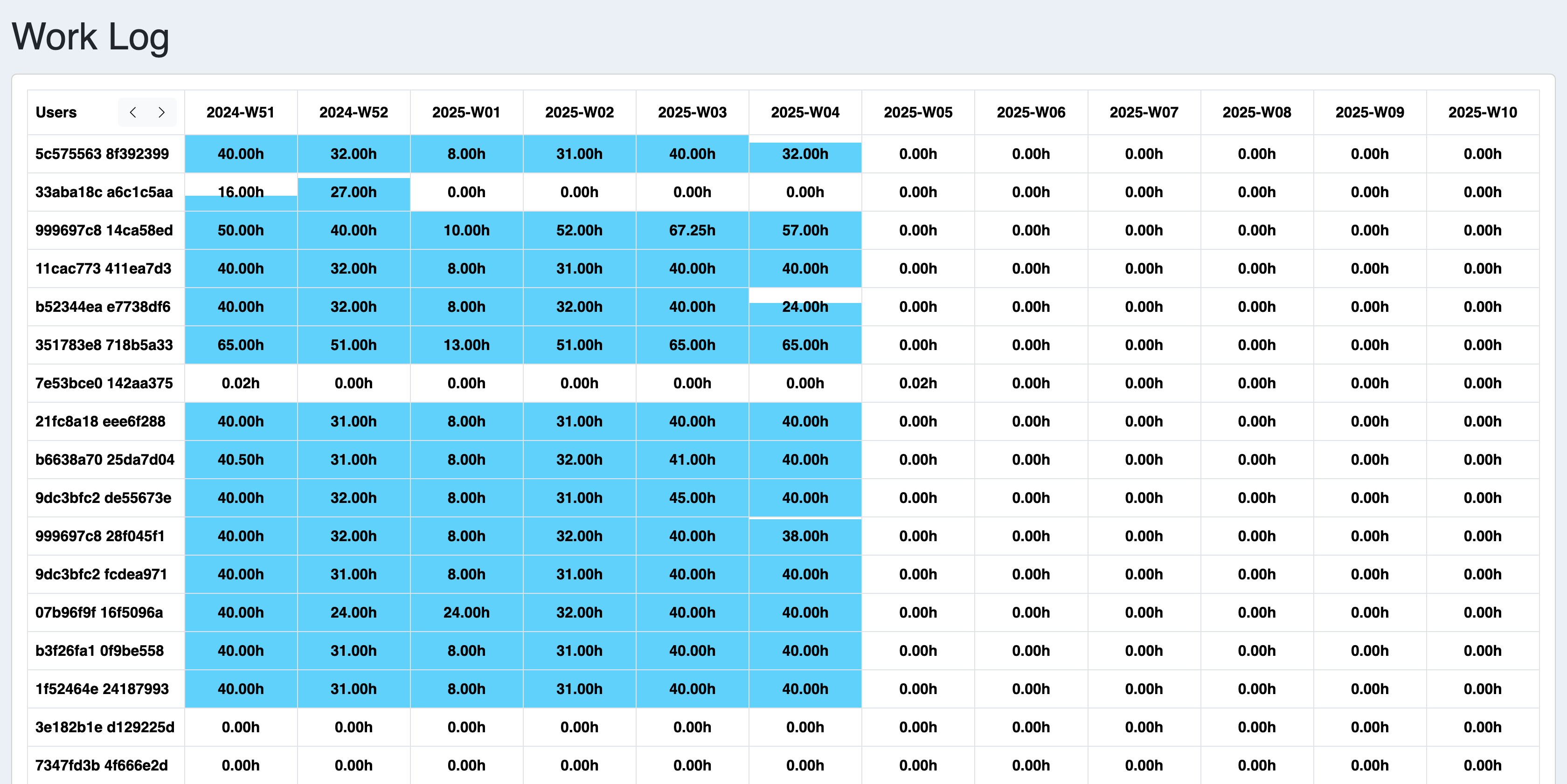
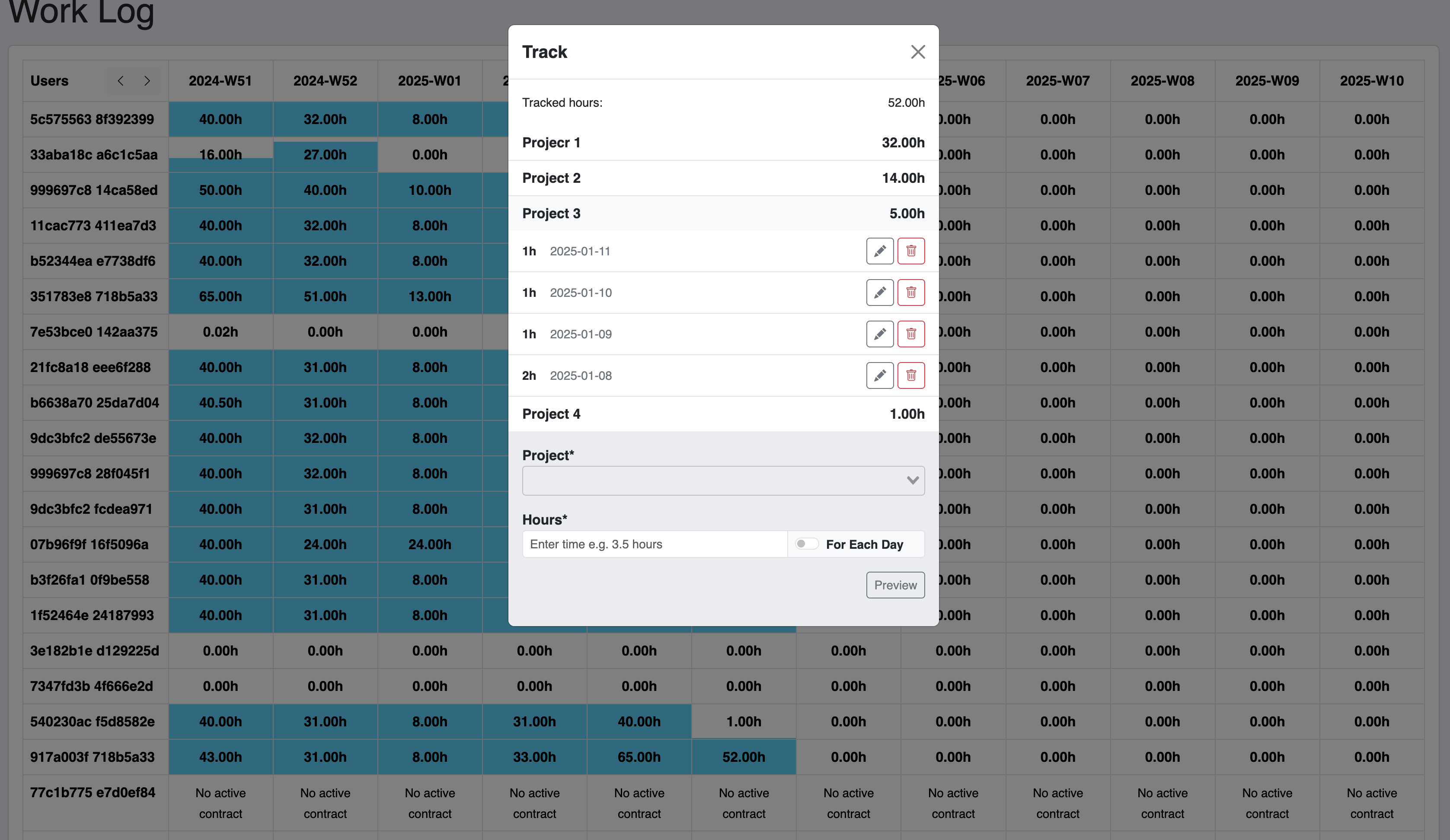
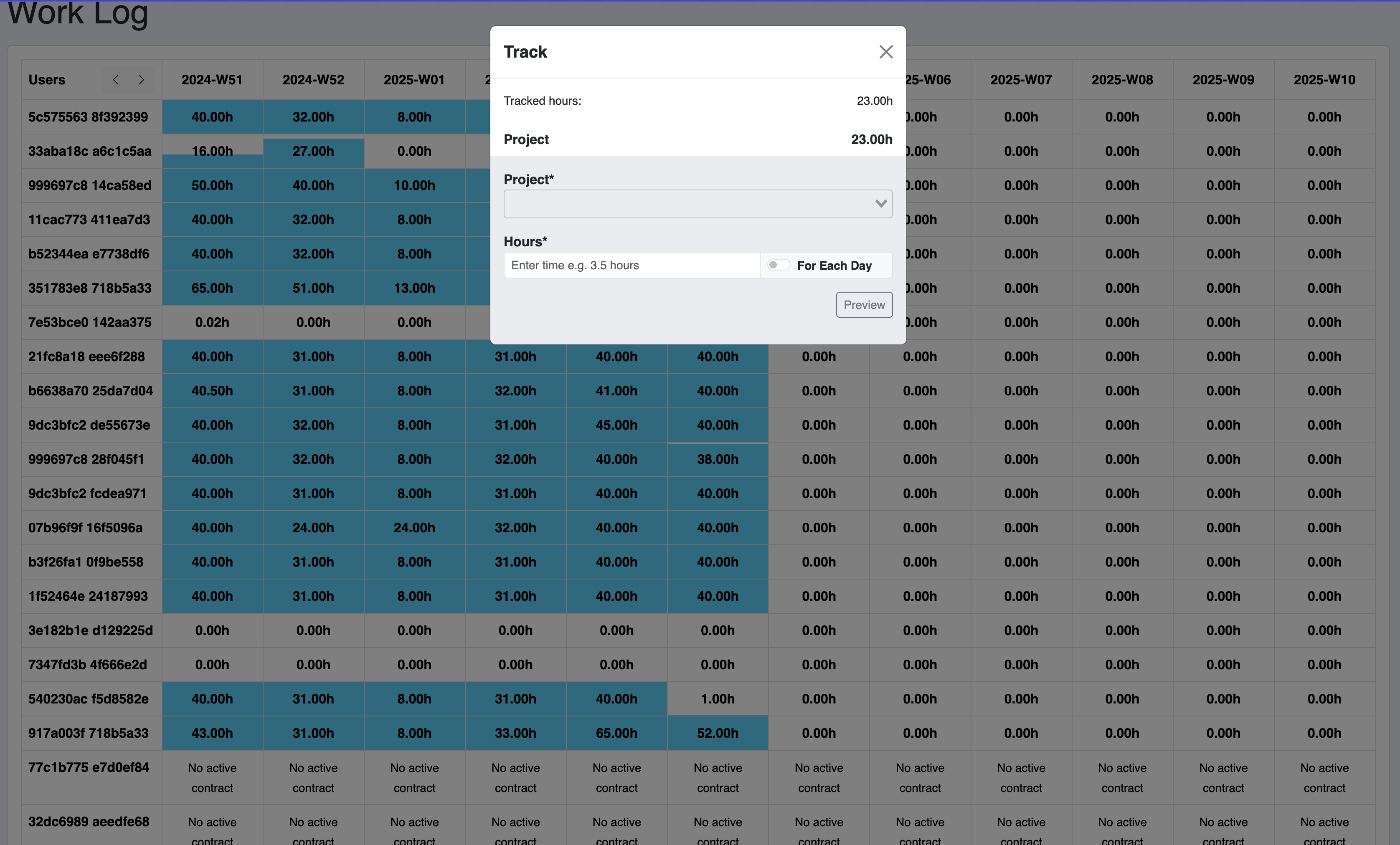




















We have been working for over 10 years and they have become our long-term technology partner. Any software development, programming, or design needs we have had, Belitsoft company has always been able to handle this for us.
Founder from ZensAI (Microsoft)/ formerly Elearningforce